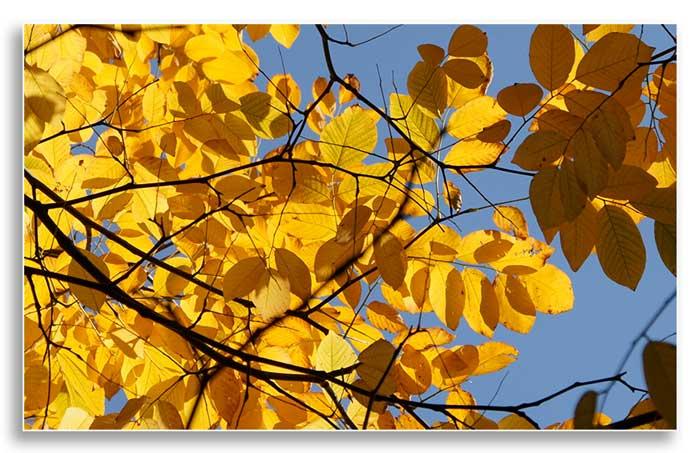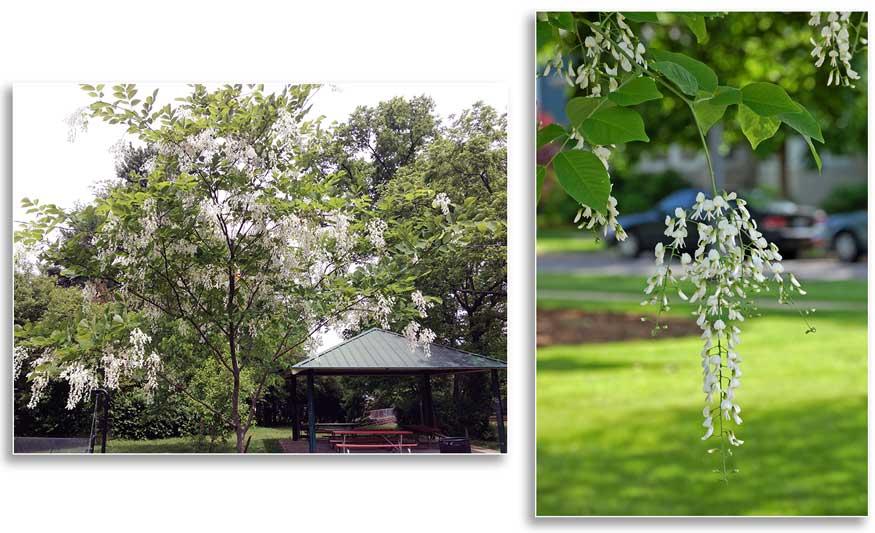Featured Native Plant: Yellowwood
By Bridget Abernathy

Native trees make up a portion of all urban landscapes. Our urban streetscapes, greenways, parks, and yards are ideal places for integrating native plants, and restoring their ecological function and value. Native plants growing in urban landscapes help to improve water quality by slowing and infiltrating stormwater, provide habitat and biodiversity, reduce the urban heat island effect, and enhance the aesthetic value of our city centers and urban neighborhoods.
Yellowwood (Cladastris kentukea) is a rare tree native to the Kentucky River palisades in the Bluegrass Region, and is found infrequently in other parts of Kentucky. It grows on well-drained limestone outcroppings, on slopes and ridges, in river valleys, and along streams in the southeastern United States. This tree has been found over a broad geographic area, but only in isolated populations throughout its native range in Alabama, Arkansas, Georgia, Illinois, Indiana, Kentucky, Mississippi, Missouri, North Carolina, and Oklahoma. Yellowwood is one of the rarest native trees in the eastern United States, but it is not ranked as a species of special concern by the Kentucky State Nature Preserves Commission. It is the only species of Cladrastis native to North America.
Yellowwood is a medium-sized, vase-shaped flowering tree, with a moderately dense canopy. Its low branching structure and broad, rounded crown can reach a height of 30 to 50 feet, with a spread of 40 to 55 feet. The leaves are alternate, pinnately compound (usually with 7-11 leaflets), yellowish-green when they emerge in the spring, turning bright green in summer, then yellow in fall. The intensely fragrant, pea-like, beautiful creamy white flowers hang in long terminal racemes, and will bloom profusely in late spring to early summer. The tree flowers when it has reached a maturity of 8-10 years, and produces a larger number of flowers every other year or every third year. Flowers give way to brown flat, thin, hard-coated seed pods which mature in the fall and are persistent. The smooth, wrinkled gray bark is thin and can be easily damaged.
This species can make an outstanding mid-size tree for the home or other urban landscape. Yellowwood can exhibit one of the most spectacular flowering displays of any tree species, and its multiple trunk habit and attractive framework of branches make it a striking specimen or shade tree. The tree grows well in both full sun and shade—although it flowers most prolifically in full sun, yellowwood grows well in the forest. Yellowwood should be pruned when young to develop a strong branch structure with wide angles. Pruning should occur in the summer to prevent bleeding. No serious disease or insect problems affect yellowwood; however, mildew, root decay, cankers, and verticillium wilt may occasionally be a problem. Despite being uncommon in its native habitat, yellowwood is increasingly found in local nurseries and garden centers. The native species is most readily available, but the pink flowering cultivar ‘Rosea’, also known as ‘Perkin's Pink', can sometimes be found.
Photography
- Yellowwood leaves in fall. (Flickr - Romana KLee, CC)
- Yellowwood in flower at Hill N Dale Park, Lexington, KY. (N. Williamson)
- Close-up of yellowwood flowers (Flickr - Tom Gill, CC)
About the Author
Bridget Abernathy is the Assistant Director of Urban Forestry for the Kentucky Division of Forestry. Email at bridget.abernathy@ky.gov
